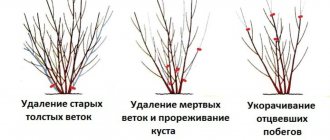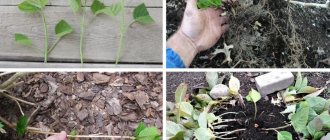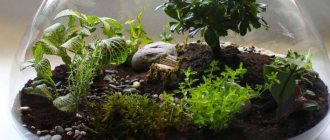A rose is the best decoration of a garden and a real pride of a gardener. Growing healthy and beautiful roses is not easy, but the result will meet all your wildest expectations, filling the air with an incredible aroma and pleasing the eye with dazzling beauty. Of course, growing roses is a real art, and propagation of the Queen of the Garden requires not only love and patience, but also a certain level of knowledge, representing a whole science, which we will try to master together with the Encyclopedia of Roses.
Rose propagation methods
Roses can be propagated in two main ways: seed and vegetative. At the same time, some experts suggest considering the grafting technique as a separate method, which still more often refers to vegetative propagation.
The use of the seed method of propagating roses is significantly limited, since most varieties do not always transfer their aesthetic properties to seedlings, however, this method is the main one in the practice of breeding new species to obtain a strong rootstock. The exception is park roses, which reproduce well by seed.
Vegetative propagation is represented by several methods, the most common of which are the following options:
- cuttings;
- dividing the bush;
- rooting by layering;
- propagation by root suckers;
- graft.
Let's take a closer look at each of the methods presented above and reveal the secrets of rose propagation, which will come in handy for gardeners who dream of their own rose garden.
Further care
Roses are light-loving plants, so to grow them you need to choose bright rooms ; additional lighting may be required if necessary.
In addition, roses take well to moisture. They should not be placed near heating appliances, regularly sprayed with a spray bottle and watered thoroughly, avoiding waterlogging or drying out of the soil.
Important! It is not recommended to spray the plant during the flowering period and in direct sunlight to prevent burns.
It is necessary to feed the rose 2 times a week with mineral fertilizers.
Below is a video about caring for indoor roses:
Subtleties of seed propagation of roses
Rose seeds
In order to grow roses from seeds, the latter can be purchased at the store or collected from your garden. If you decide to prepare the seeds yourself, it is best to collect rose fruits at the end of August, when they are not yet fully ripe and are just beginning to turn red. The fact is that seeds obtained from unripe bolls have better germination and form more viable plants. You should not collect seeds from fruits that are susceptible to rotting, since the resulting material is not suitable for planting.
When removing seeds from the fruit, it is necessary to carefully and thoroughly clean them of pulp, after which the resulting grains are treated with a solution of hydrogen peroxide for 20 minutes. It is best to carry out this manipulation using a sieve. This procedure is aimed at protecting the seed from microbial spoilage and mold. Most often, rose seeds have different shapes and size characteristics, but this should not confuse the gardener, since these parameters cannot significantly affect the germination level of the seed.
Having received the seeds, you can grow roses from them both indoors (in a container) and directly in the garden. Depending on the conditions created, the seed germination technology will be slightly different.
Benefits of own-rooted roses
Cuttings of roses has its advantages, since it makes it possible:
- get a lot of free planting material;
- avoid the need to remove wild growth;
- get a more durable plant. Grafted roses are planted by grafting at ground level or slightly buried. Over time, many still switch to their own roots. However, their lifespan is about ten years. And self-rooted roses, especially those uncovered, can exist for decades.
Germinating rose seeds at home
The entire process of growing roses indoors can be divided into several successive stages:
Preparation for statistics. A cotton pad or small piece of cloth is generously moistened with a solution of hydrogen peroxide. Place rose seeds on the resulting damp cloth and cover with the same cotton pad. Statification. Seeds, wrapped in a damp cloth, are placed in a plastic container or plastic bag and placed in the refrigerator. It is better to place the resulting container in an area where the temperature is about +5 ̊C. The seeds should remain in this state for about two months. At the same time, you should regularly check and maintain the moisture level of the fabric. Germination. Statified seeds are transferred to a pot with soil or peat and conditions for germination are created: t - 18-20 ̊C, active lighting time about 10 hours, regular moderate watering. It is better to mulch the soil with perlite. Hardening. Before transferring the rose to natural soil, it should be prepared for environmental conditions by taking the pot outside every day, gradually increasing the residence time. Disembarkation. The best time to plant roses obtained in this way in natural soil is May. Roses are planted in pre-prepared holes, choosing a warm, well-lit place.
Rooting in potatoes
Not only bushes are suitable for propagating roses. You can replenish your collection with flowers in a bouquet or cut from bushes at home. It must be remembered that fresh roses are better suited to this method, and the most beautiful hybrids often have little potential for this type of propagation. But you can also try even with rare varieties. The bud is first cut off without waiting for it to wither.
Related article:
Small bush roses - a miniature treasure for the garden and home
Remove all the eyes from the potato and make a small depression. The cut of the rose is dipped in Kornevin powder and placed tightly in the recess. Then the potato with the flowering shoot inserted into it is buried in the ground. Cover everything on top with a plastic or glass bottle. This is necessary to create humidity inside the volume. In this case, the leaves should not touch the walls. The rose needs to be sprayed every day. If she is accepted, it will be clear from the new kidneys.
Germinating seeds in natural conditions
The procedure for germinating seeds in natural soil is much simpler, but the survival rate in this case will be much lower. In order to germinate seed in the garden, it is enough at the end of August, immediately after collecting and processing the seeds, to plant them in the ground, lightly sprinkling them with earth. Next, the soil is slightly moistened and covered with covering material, which protects the ground from freezing in winter. In the spring, the planting site is cleared and the seeds are waited for germination. You should be prepared for the fact that roses that were obtained by seed propagation usually produce rather weak and short-lived flowering in the first year, but by the next summer the bush forms full buds.
Inventory preparation
- Pots . Before planting, planting pots should be disinfected, namely, soaked for one day in a bleach solution. Next, the containers must be rinsed with hot running water using soda (baking or soda ash).
- Soil . The soil for planting must also be disinfected to prevent the seedlings from becoming infected with fungus. To do this, it is advisable to calcine the soil in the oven for three hours.
- Tool . A knife for cutting parts of the rose that are required for propagation should be treated with alcohol or a solution of potassium permanganate.
Vegetative propagation of roses
Vegetative propagation of roses
The ability for vegetative propagation is a unique property of plant organisms, which is manifested by classical regeneration. This process consists in the fact that the plant is able to completely restore its body from a separate part through active cell division. The main advantage of vegetative propagation is the complete predictability of the results, because the resulting plant will have all the characteristic features of the mother’s body.
If the rose was obtained by vegetative propagation, it is said to be a root-capable plant, which can form a new young shoot after the death of the above-ground part.
Propagation of roses by offspring
The method of propagating roses by separating root suckers from the mother plant is most suitable for park varieties, since they produce quite a lot of so-called “children.” The technique involves transplanting small free shoots, which usually form near the mother rose, most often forming on the southern side of the plant. The method of separating offspring is quite simple, but does not always demonstrate a high level of efficiency.
You can get a rose by propagating by offspring by carefully separating young straight shoots from the maternal root system. It should be understood that newly formed offspring are not ready for independent survival, due to the absence or imperfection of their own root system. Before separation, the plant should be allowed to acquire roots and gain strength. This requires endurance, because the formation of a full-fledged root system takes about a year. It is best to replant in the spring, when the soil has already warmed up sufficiently and the risk of cold weather returning is minimal.
Advice. In order to stimulate the formation of additional roots and get a beautiful bushy plant, when replanting, prune the young stem, removing a third of the length of the shoot.
Where to put the rose?
Indoor roses are fussy ones! When it’s hot, they feel bad, they begin to shed buds and leaves, and grow slowly. The best place to grow this plant is a windowsill on the east or west side. The south window is too hot and will require frequent watering and ventilation. The northern one is the best, but there is little light here, you will have to purchase additional lighting.
Rose feels good at temperatures from +10 to +25. Next, it’s too hot, and therefore the plant may start to hurt! The rose tolerates temperature changes and even slight frosts well, so don’t worry about the beauty if you forgot to close the window in winter when leaving home.
Reproduction of roses by layering
Propagation of roses by layering is excellent for shrubby, climbing and groundcover plant varieties. The fact is that propagating roses by layering is the priority and most effective way to obtain a plant that has all the qualities of a mother rose, but it is only suitable for those species that have strong and sufficiently long shoots. It is best to start the process of propagating roses in this way in early spring, performing the following steps in succession:
Carefully dig up the soil near the rose bush, without damaging the root system of the plant and removing all existing weeds. The loosened soil is mixed with some peat and sand. We select the shoot of the mother rose, which has the most superficial location, and remove all the leaves. In the area of one of the lower buds, make a neat circular cut and insert a match or a sliver of wood into it. Make a small depression (about 10 cm) in loose and well-moistened soil near the bush. The selected and pre-cut shoot is bent so that the upper part of the trunk is in the prepared hole and sprinkled with earth. The soil must be compacted well so that it holds the buried shoot. If the trunk has a too dense and elastic base, it can be secured with special arms made of wire or tied to a metal peg. The cuttings are watered regularly. In summer, especially in hot weather, watering must be done daily, which will promote rapid root formation.
Thus, by the beginning of autumn, the cuttings form their own root system. At this time, the rooted shoot can be separated from the mother rose and transplanted to a new location. Some gardeners, to increase the likelihood of survival of the cuttings, recommend replanting only next spring.
Another option for propagating the Queen of Flowers by layering is to obtain vertical shoots, which is more often used for the industrial production of seedlings. In this case, the rose is trimmed short, leaving only 5 cm above the ground, after which it is hilled up so that the entire short sprout is covered with loose soil. Hilling continues as the plant grows, using loose, well-moistened soil for this purpose. In the fall, gradually removing the soil, the rooted individual cuttings can be separated from the mother plant and transplanted to a new location.
Features of planting ready-made cuttings in open ground
Cuttings of roses planted for the winter will have time to take root and adapt in order to begin to grow with the onset of spring.
Experienced flower growers recommend immediately planting cuttings in the place where the rose bush will live in the future.
Since cuttings of roses in the fall are popular and in demand for climbing and semi-climbing varieties, they are planted near a support. For example, gazebos, walls, fences, decorative lattice. Or they free up the area for soil cover.
Having a large number of cuttings, they can be rooted in a specially designated bed, and then seedlings with a formed root system can be planted in a permanent place.
Choosing a landing site
Most modern hybrids are adapted to unfavorable conditions, such as: lack of moisture, frost, proximity to other plant species. This does not mean that rose bushes need not be watered or cared for.
For climbing, semi-climbing and tall varieties, you need to choose a place protected from the wind so that strong gusts do not break the branches.
Roses love well-lit areas on light, loose soils with good drainage, away from groundwater.
Garden trees create competition for roses by covering them with foliage; as a result, the flowers on rose bushes become smaller, the intensity decreases, and the flowering period decreases.
The optimal soil for growing bushes is one consisting of turf soil and peat (2:1) with the addition of one part of river sand and ½ part of vermiculite to improve drainage properties. In addition, the loosened and prepared beds for planting are sprinkled with a layer of sand (3-5 cm).
Planting cuttings in the ground
The best time to root cuttings is from mid-September to the end of October. Before planting, water the soil generously with a solution of potassium permanganate to disinfect it.
After:
- make holes, at the bottom of which a layer of compost is placed;
- deepen the cuttings at an angle of 450C so that 2-3 buds remain above the soil level;
- sprinkle the soil with a layer of sand;
- Each seedling is covered with a glass jar or a plastic cut-off bottle.
Before frost sets in, seedlings are regularly ventilated, watered and sprayed with water.
Preparing cuttings for wintering
Then watering is stopped, the plantings are sprinkled with mulch and covered with spruce branches, burlap, roofing felt - your choice. As soon as snow falls, the plantings fall asleep, forming snowdrifts.
You can remove the jars only with the onset of real spring warmth after the end of frost.
If a common greenhouse is arranged for the cuttings, covered not with separate jars, but with a common film, then with the onset of cold weather, the film is carefully secured around the perimeter, then covered with spruce branches or dense material.
The cuttings overwinter under a layer of snow. Particular attention should be paid to wintering cuttings during a frosty, snowless winter: the risk of seedlings freezing increases, so instead of snow, they should be insulated as well as possible with artificial materials.
Propagation of roses by cuttings
Propagation of roses by cuttings
Propagation of roses by cuttings is one of the simplest, most accessible and effective ways to obtain a healthy bush. This technique is so unpretentious that it allows you to reproduce even flowers collected in a bouquet. This method is actively used for miniature and polyanthus varieties, as well as for Floribunda roses.
Proper cuttings involve obtaining a viable plant in the shortest possible time. To obtain cuttings, you should take a healthy and fairly strong one-year-old shoot, which should have a thickness of about 5-6 cm. A cutting is the middle section of a rose shoot, obtained by two prunings. The top pruning is done just above the bud (2-3 cm), while the bottom pruning can be done just below the bud. The cuts should be made with a very sharp tool, preferably a razor blade, and have an angular surface.
Preparing cuttings for planting involves removing all lower leaves. It is allowed to leave two leaf plates at the top, but the surface of the cut shoot will have to be cleared of all thorns. Before planting, the lower cut must be treated with a special growth stimulator.
Planting can be done in several ways:
- Classic planting in loose soil at an angle of 45°.
- Rooting cuttings in a greenhouse.
- Planting cuttings under jars, etc.
You will find a detailed step-by-step description with photos of how to grow roses from cuttings on our website.
Regardless of the chosen method of rooting the cuttings, fertile, well-moistened soil should be used, which will increase the efficiency of this propagation technique. Interestingly, the cutting method is better suited for varieties with dark flowers - burgundy, deep pink, red, etc. The percentage of rooted cuttings for plants with light flowers is significantly lower.
Green cutting method
Primrose propagation: basic methods and examples at home
Green cuttings can be used for garden or hybrid species (such as tea varieties). This method uses semi-lignified cuttings. It is held in the summer.
For this method, the middle part of the shoots is taken when they are still blooming in the garden. In this case, the following technological conditions must be observed:
- The cutting length should be 6-9 cm.
- Leaves are trimmed to 1/3 of their length.
- The leaves are removed from below.
- The cut must be straight and even, 1 cm above the bud.
- The bottom cut is made at an angle of 45°.
- Before rooting the rose, the cuttings are placed in a solution of heteroauxin and left there for two days.
- The culture is planted at an angle of 45°.
- It is sprayed with water every day.
The planted crops are covered with film or glass. The plant is left for the winter, covered with additional material. It takes years to get a nursery of developed roses.
There is another, home method that allows you to root cuttings. To do this, they are first planted in a potato tuber.
The method of propagating roses by green cuttings is used for hybrids
Reproduction by dividing the bush
This method is only suitable for adult, healthy bushes with many full-fledged shoots. In order to divide one bush into several individual plants, it must be completely dug up without damaging the root system of the rose. It is best to do this in early spring, since after planting individual parts of the plant, they will need some time to recover in favorable conditions, which corresponds to warm, sunny weather. The dug out bush is pruned, removing two-thirds of the shoots and one-third of the roots. Next, the plant is divided using pruners, previously treated with a solution of any antiseptic, into several separate parts, each of which must have a full-fledged part of the root system and one healthy shoot, with at least two buds.
Roses obtained in this way are planted superficially, deepening the root system by 5 cm into well-loosened and fertilized soil. Watering such a young plant must be regular in order for the plant part to take root well and regenerate. In this way, a full-fledged bush with abundant, long-lasting flowering can be obtained within 1-2 years, after dividing the mother plant.
How to grow a rose using potatoes: growing scheme, description of propagation by cuttings
You can even grow roses using potato tubers. detailed step-by-step instructions below:
- It is necessary to dig a trench 15 cm deep on a sunny, windless side and fill it with sand
- From healthy, beautiful bushes you need to cut shoots no more than 20 cm long. Choose green cuttings the thickness of a pencil
- Remove all leaves and thorns from the cut stem
- Make small holes in the tubers of young potatoes and insert the cuttings there
- Place the tubers with cuttings in the trench and cover with soil on top
Growing roses using potatoes
Thanks to the moist environment in the potatoes, the cuttings will not dry out and will take root well. With regular watering and good care, by the end of summer the seedlings will be ready for planting.
Rose propagation by grafting
Grafting is a technique that is based on the artificial merging of a cutting of one rose, called a scion, with the base of another plant, in this case called a rootstock. Simply put, this method of propagation involves the grafting of a healthy rose cutting of any variety to the rootstock of a frost-resistant and drought-resistant rosehip. The result is a plant that simultaneously has excellent aesthetic properties and has a low level of sensitivity to aggressive external environmental factors. Cinnamon rose, wrinkled rose or dog rose can be used as a rootstock.
Propagation of roses by grafting
It is best to graft plants in winter or summer, since these seasons are characterized by the most active sap flow processes. Depending on the chosen season, there are two types of vaccination:
Possible problems and difficulties
Inexperienced gardeners often make mistakes when propagating roses. They may not have the best effect on the health of the plant. One of these mistakes is incorrect watering mode . As a result:
- powdery mildew;
- rust;
- black spot.
Their treatment consists of treating the bushes with effective mixtures and pruning the affected branches.
Most often, a rose is affected by spider mites . As a preventative measure, the premises in which indoor roses grow should be treated once every six months. A sign of infection is the curling of rose leaves.
Treatment consists of treating the leaves with a special solution on both sides in the open air. The rose has beautiful and unusual flowering. In order for it to please the eye for as long as possible, you just need to create favorable growing conditions for it and ensure proper reproduction. Which is not that difficult.
Summer vaccination
Summer grafting is also called budding and is considered one of the most effective and rational ways to propagate roses. This event takes place from mid-July to mid-August. Budding consists of the following stages:
The rosehip used as a rootstock is dug up somewhat, carefully freeing the root collar from the ground. In this case, it is better to remove all side shoots. On the root collar, an incision is made in the bark in the shape of the letter T, so that the length of the vertical line is about 4 cm, and the horizontal line is no more than 1. We prepare the cuttings by removing all the leaves and cutting off one eye. The eye is cut with a blade from bottom to top. The cut eye is placed in a cut on the root collar and rewound with a special budding film. Survival can be determined 2-3 weeks after grafting by observing the eye, which should have a fresh green color.
Before the winter cold, the grafting site should be hilled up so that it is completely covered with earth to a distance of about 5 cm. In the spring, the earth is removed along with the budding film.
Winter vaccination
Winter vaccination is best done in February. The rootstock prepared in advance is stored in a warm room, in a mixture of sand and wet clay. A neat oblique cut is made on the cutting of the scion, while a cut is also made on the trunk of the rootstock, but strictly lateral. The places of the cuts are treated with garden broth, combined and tightly fixed with a special film. After a few days, the plant can be planted in the ground and kept warm until early spring, when it is permissible to transfer the rose to natural garden conditions.
We hope that the advice of our experts was useful to beginners and experienced gardeners and now you can easily acquire new specimens of luxurious and fragrant flowers on your own.











